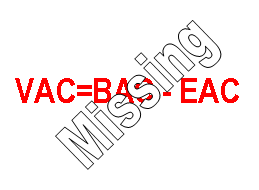Are you studying for the PMP exam and struggling with the concept of Schedule Performance Index (SPI) and Cost Performance Index (CPI)? Are you just bored and want to impress your friends with your knowledge of SPI and CPI? Well, I'm going to try to make it easy for you. To the left you'll see two charts. Both are displaying variances on a monthly basis. The first chart is displaying variances in thousands of dollars, both in schedule and cost. The second chart is displaying the variances as they relate to a performance index.
Definitions and Formulas
Earned Value (EV) - The estimated value of the work actually accomplished
Actual Cost (AC) - The actual cost incurred from the work accomplished
Planned Value (PV) - The estimated value of the work planned to be done [Chart 1 - Variance (In Dollars)]
Scheduled Variance (SV)=EV - PV a NEGATIVE schedule variance is behind schedule and a POSITIVE schedule variance is ahead of schedule
Cost Variance (CV)=EV - AC a NEGATIVE cost variance is over budget and a POSITIVE cost variance is under budget[Chart 2 - Variance]
Schedule Performance Index (SPI)=EV ÷ PV You are progressing at __% of the rate originally planned
Cost Performance Index (CPI)=EV ÷ AC You are getting $_____ worth of work out of every $1 spent
Practical Application
So, where does that leave us? Your goal is to have a $0 (zero dollar) cost and schedule variance, resulting in a SPI and CPI of 1.0. That would mean you estimated correctly, leading into your project. Going into the PMP exam, you should know these formulas and how to calculate all of the above. Here are a 2 simple questions you should be able to answer:
1. Is a 1.3 CPI a good thing or a bad thing? Why?
This is a good thing! A 1.3 CPI translates to you getting 1.3 dollars of results for every dollar you put into the project.
2. Is a 0.90 SPI a good thing or a bad thing? Why?
This is a bad thing! A 0.90 SPI translates to your project progressing at 90 percent of the rate originally planned.
Here is the moment of truth. What kind of question is going to be on the PMP exam?
Example Question: Based on the charts listed above, what would you be more concerned with, schedule or cost, if you were taking over this project from another project manager?
Answer: The answer is cost. As of August, CPI is closest to 1.
 Variance At Completion (VAC) is the difference between what the project was originally expected (baselined) to cost, versus what it is now expected to cost.
Every month, our vendor is required to report this total on the project as a whole and on key deliverables. I'm used to seeing the numbers reported and how to calculate them. I'm not asking for the Cost Performance Index (CPI). I want to know how far over or under we're going to be compared to the budget.
Variance At Completion (VAC) is the difference between what the project was originally expected (baselined) to cost, versus what it is now expected to cost.
Every month, our vendor is required to report this total on the project as a whole and on key deliverables. I'm used to seeing the numbers reported and how to calculate them. I'm not asking for the Cost Performance Index (CPI). I want to know how far over or under we're going to be compared to the budget.

